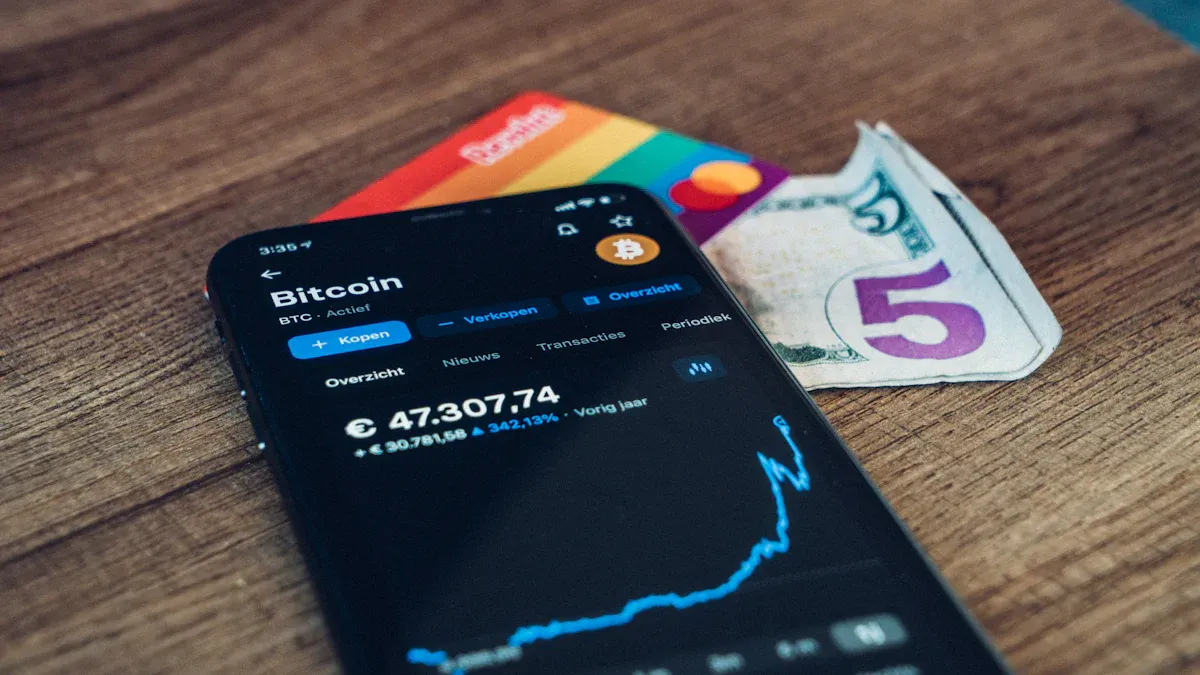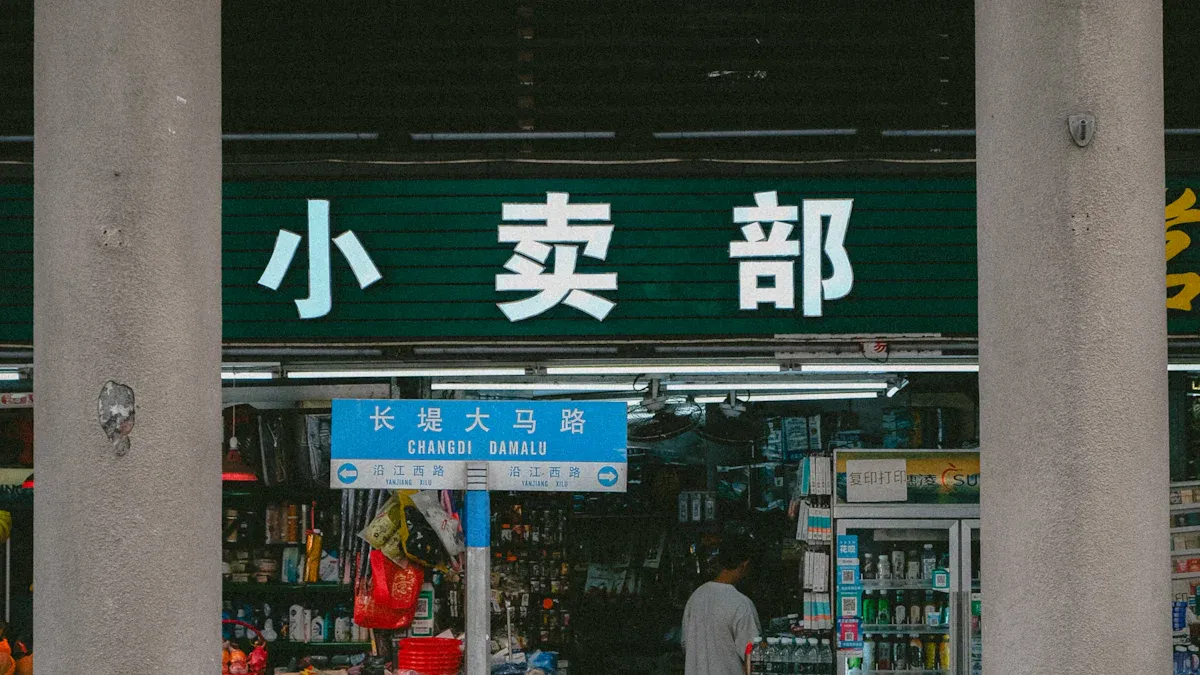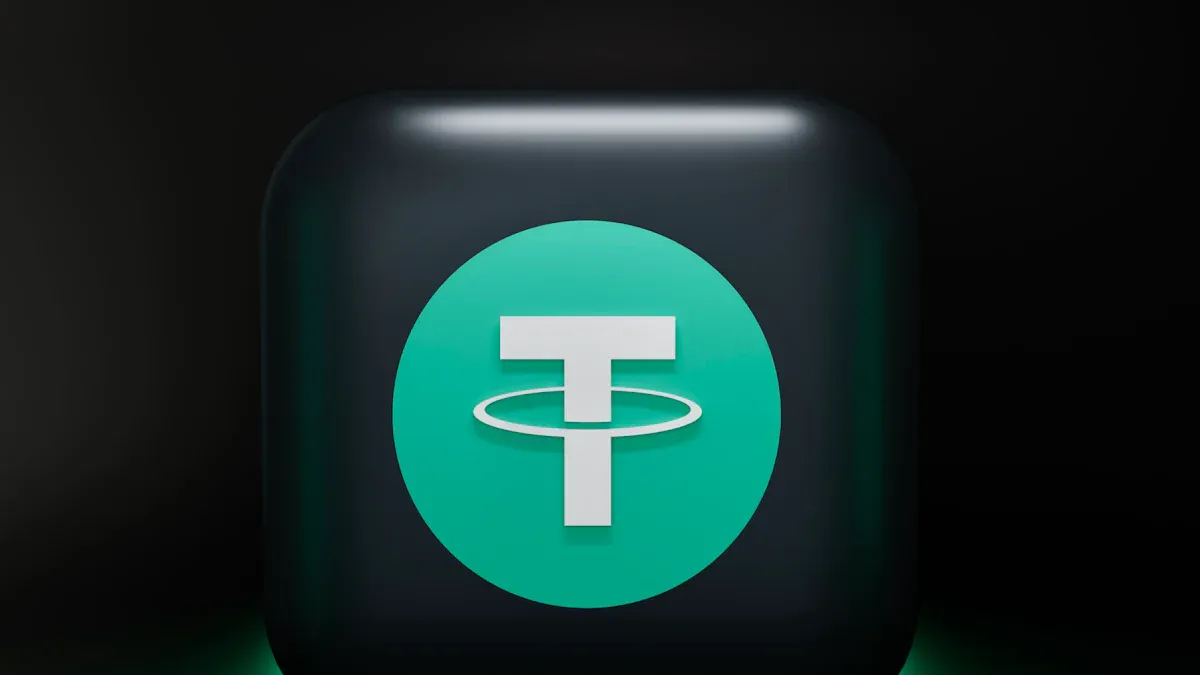- EasyCard
- Trade
- Help
- Announcement
- Academy
- SWIFT Code
- Iban Number
- Referral
- Customer Service
- Blog
- Creator
Are Yiwu Merchants Really Using USDT? The Reality and Rumors of Stablecoin Cross-Border Payments

Image Source: unsplash
Recently, a rumor has sparked heated discussions in the market.
The rumor claims that over 3,000 merchants in Yiwu are using USDT for receipts, with monthly transaction volumes reaching up to 1 billion USD.
This claim paints a prosperous picture of stablecoin cross-border payments. However, there is a huge gap between the rumor and reality. Official data shows the trade scale as follows:
| Time Period | Total Import/Export Value (100 million CNY) |
|---|---|
| First Three Quarters of 2025 | 631.2 |
These transactions completed through traditional banking channels reveal the true mainstream of Yiwu’s foreign trade.
Key Takeaways
- Yiwu merchants mainly use banking channels for receipts, which ensures export tax rebates and business credibility.
- A small number of merchants use USDT in special circumstances, but this is not a widespread phenomenon.
- Export tax rebates are very important for foreign trade companies; they are more valuable than saving handling fees.
- Using USDT for receipts carries legal risks and may lead to bank account freezing.
- Stablecoins have specific uses in some countries, but they face many obstacles in China’s cross-border trade.
Yiwu Receipt Truth: Rumors vs. Reality

Image Source: unsplash
The scene depicted by the rumor is far from Yiwu’s commercial reality. The vast majority of merchants’ daily receipts still rely on mature and compliant traditional paths.
Mainstream Choice: Traditional Banking Channels
Yiwu’s foreign trade mainstream receipt method is clear and stable. Merchants generally use traditional banking channels to process transactions. Large transactions are mainly completed via bank wire transfers. Although some consider the SWIFT system “slow and costly,” its compliance and security make it the preferred choice for B2B trade.
At the same time, officially led solutions are actively promoted.
- "Yiwu Pay": This third-party payment platform aims to serve Yiwu’s over 900,000 merchants. It supports settlement in 21 major currencies including RMB and integrates convenient payment apps like Alipay and Apple Pay.
- Cash and Bank Cards: In Yiwu’s physical markets, small transactions are still mainly in RMB cash, with some shops accepting mainland China bank cards.
These official and traditional channels together form the backbone network for Yiwu receipts, ensuring orderly trade activities.
Minority Users Explored
Although traditional channels are mainstream, a small number of merchants do use USDT in specific situations. Reports indicate that cases of using stablecoins for transaction settlement have appeared in the Yiwu small commodities market. These users typically face special circumstances:
When buyers from Russia or parts of Africa cannot use banking systems due to international sanctions, cryptocurrency becomes an alternative payment solution.
Additionally, some buyers may proactively request cryptocurrency to simplify processes or protect privacy. For some small, high-frequency transactions, this method can also improve efficiency. However, this is limited to specific scenarios where normal channels cannot complete transactions and is not a general choice.
Official Response and Broker Reports
China’s mainland strict regulatory policy on cryptocurrencies is a reality merchants must face. Although the People’s Bank of China pays attention to blockchain technology development, its policy on private use of cryptocurrencies for trade has not changed. This means using USDT for receipts carries compliance risks, and merchants may be unable to obtain export tax rebates due to lack of bank documents.
Broker reports also reveal the official’s true layout. China is vigorously promoting its own Cross-Border Interbank Payment System (CIPS) and digital RMB (e-CNY).
| System | 2021 Growth | As of Early 2022 |
|---|---|---|
| CIPS | Transaction volume grew 75% | Continued expansion |
| e-CNY | - | Wallet count reached 261 million |
These initiatives indicate that officials prefer to provide alternatives beyond SWIFT by building independent, compliant clearing systems rather than turning to decentralized stablecoin cross-border payments.
Stablecoin Cross-Border Payments: Ideal Advantages and Real Obstacles

Image Source: unsplash
The appeal of stablecoin payment rumors stems from the idealized advantages they depict. However, when these advantages collide with the commercial reality of foreign trade, insurmountable obstacles are exposed.
Theoretical Advantages: Near-Zero Cost
The high cost of traditional cross-border payment methods is the direct reason merchants seek alternatives.
According to World Bank data, at the end of 2023, the average cost of international remittances was 6.39% of the remittance amount. If through banking channels, this cost could soar to 11.99% of the transaction value.
This means for a 10,000 USD payment, fees alone could reach hundreds or even thousands of USD.
Stablecoin payments theoretically offer a highly attractive solution. It achieves peer-to-peer transfers via blockchain technology, directly from the payer’s wallet to the recipient’s wallet, bypassing multiple intermediaries in the traditional banking system. This model brings significant advantages:
- Extremely low transaction fees: Stablecoin transaction network fees are unrelated to the amount.
- Efficient settlement speed: Blockchain networks operate 24/7, with transactions usually confirmed in minutes.
- Simplified process: No need to fill complex wire transfer forms or wait for bank processing.
To clearly demonstrate its efficiency, we can compare the theoretical performance of two mainstream USDT networks:
| Feature | TRC-20 USDT (Tron Network) | ERC-20 USDT (Ethereum Network) |
|---|---|---|
| Transaction Fee | Usually less than 1 USD, extremely low cost | Higher fees, may exceed 50 USD during busy periods |
| Transaction Speed | Fast, usually completes within one minute | Slower, may take several minutes or longer |
For a 10,000 USD payment, using TRC-20 network USDT costs less than 1 USD, while traditional wire transfer may require 50 USD. This near-zero cost, second-level arrival characteristic forms the core theoretical appeal of stablecoin cross-border payments.
Core Obstacle: Lack of Export Tax Rebates
Despite obvious theoretical advantages, a fundamental commercial reality makes it difficult in B2B foreign trade scenarios like Yiwu: export tax rebates.
Export tax rebates are a key policy in mainland China to encourage exports. It refunds the VAT and consumption tax paid during domestic production and circulation of goods to exporting companies after customs declaration. This rebate is an important part of foreign trade companies’ profits, far exceeding saved transaction fees.
To successfully apply for export tax rebates, companies must provide a complete set of documents to tax authorities, with the most critical being:
Official receipt certificate issued by the bank. This document is the only legal proof that the company has received foreign exchange payments through compliant channels.
USDT transactions occur on the blockchain, with fund flows not passing through the banking system. Therefore, merchants cannot obtain the bank receipt certificate necessary for rebate applications.
For a legitimately operating Yiwu merchant, this means a simple choice:
- Option A: Save tens of USD in remittance handling fees, but forfeit export tax rebates up to 13% of the payment (depending on commodity tax rates).
- Option B: Pay traditional remittance fees, but ensure thousands or even tens of thousands of USD in export tax rebates.
The answer is self-evident. Forgoing huge legal profits for negligible fee savings is commercially untenable.
Compliance Red Lines and Business Credibility
Beyond commercial interest considerations, legal red lines are a reality no merchant can ignore. Mainland China’s regulatory authorities have a clear stance on virtual currencies.
According to documents issued by the People’s Bank of China and other departments in 2013 and 2017:
- “Virtual currencies” like Bitcoin and USDT do not have the same legal status as fiat currency.
- They cannot and should not circulate as currency in mainland China’s market.
- No financial or payment institutions may conduct virtual currency-related business.
This means using USDT for trade settlement is in a legal gray area. For companies, this brings a series of severe potential consequences.
| Institution/Behavior | Legal Consequences/Regulations |
|---|---|
| Participating in Cryptocurrency Transactions | May face administrative penalties or even criminal charges like illegal fundraising. |
| Financial Institutions | Strictly prohibited from providing account opening, settlement, or any services for cryptocurrency transactions. |
| Investment Contracts | Cryptocurrency-related investment contracts are invalid and not legally protected. |
| Illegal Gains | Proceeds from illegal cryptocurrency activities will be confiscated by law. |
Such non-compliant operations not only invite legal risks but severely damage business credibility. A company relying on non-official receipt channels struggles to gain trust from large partners, suppliers, and financial institutions (such as Hong Kong licensed banks providing trade financing).
Hidden Costs: U-Merchant Spreads and Risks
Even if merchants are willing to bear all the above risks, stablecoin cross-border payment costs are not “near zero.” Received USDT is a digital asset, unusable directly for employee wages, factory rent, or raw material purchases. It must be converted to local fiat to enter the real economy.
This conversion is usually done over-the-counter (OTC), finding so-called “U-merchants” for private exchanges. This step hides additional costs and risks:
- Conversion Spread: U-merchants do not provide services for free. There is a spread between their buy and sell quotes, essentially a hidden fee. This spread is usually 1% or higher, far exceeding USDT transfer fees themselves.
- Fund Freezing Risk: This is the most fatal risk. Due to cryptocurrency anonymity, U-merchant fund sources are extremely complex, possibly mixed with funds from online gambling, telecom fraud, etc.
When merchants convert USDT to RMB via U-merchants, if received funds are identified as “involved funds” by law enforcement, the merchant’s bank account may be immediately judicially frozen.
Even if merchants are unaware of fund sources, they must spend significant time and effort proving innocence, severely impacting normal operations. This potential huge loss is unbearable for any prudent merchant.
Global Perspective: Stablecoin Applications and Risks
Although stablecoins are hindered in Yiwu’s B2B foreign trade, they have found uses in other specific scenarios. Stepping out of Yiwu for a global view, stablecoin applications and risks present another picture.
Emerging Market Application Exploration
In countries with weak financial infrastructure or unstable local currencies, stablecoins serve as a “lifeline” for asset protection.
Argentina and Turkey are typical examples. In 2023, Argentina’s inflation rate reached 161%, with many citizens converting pesos to USD-pegged stablecoins like USDT to combat depreciation. When the Argentine peso sharply devalued in December 2023, the country’s monthly stablecoin transaction volume surged to over 10 million USD.
In these regions, stablecoins mainly play two roles:
- Value Storage: Help people avoid hyperinflation and preserve wealth purchasing power.
- Payment Tool: Provide efficient cross-border payments when banking systems are inconvenient or restricted.
Chainalysis reports show rapid stablecoin usage growth in Latin America and sub-Saharan Africa, sometimes exceeding Bitcoin.
Payment Practices in Tourism and Other Sectors
Tourism is another sector actively exploring stablecoin payments. This industry involves many small, high-frequency cross-border transactions with high efficiency demands.
Some airlines and online travel agencies have begun accepting cryptocurrencies. For example, booking platform Travala.com had 80% of 2024 bookings via cryptocurrency. To simplify, solutions like Biyapay have emerged. Such platforms allow hotels, travel agencies, etc., to easily accept stablecoin payments and settle in local fiat, lowering technical barriers and exchange risks.
However, challenges persist. Lack of blockchain knowledge, non-uniform technical standards, and regulatory uncertainty hinder widespread adoption.
Inherent Risks: De-Pegging and Regulation
Stablecoins are not risk-free; the most fatal is “de-pegging risk”—losing the 1:1 ratio with the pegged fiat (usually USD).
The 2022 TerraUSD (UST) collapse is the most famous de-pegging case in history. This algorithmic stablecoin’s value nearly zeroed in a week, evaporating about 60 billion USD in market cap and triggering crypto market chain reactions. This event made investors and regulators aware of stablecoins’, especially algorithmic ones’, structural flaws.
UST’s collapse directly shook investor confidence in stablecoins; even asset-backed Tether (USDT) briefly fell to 0.96 USD.
This crisis accelerated global regulation. Major economies are establishing clear rules for stablecoin cross-border payments and applications.
| Region | Regulatory Framework | Effective Date |
|---|---|---|
| 🇪🇺 EU | MiCA Act | June 2024 |
| 🇺🇸 USA | GENIUS Act | July 2025 |
These regulations require stablecoin issuers to hold 1:1 reserve assets and undergo strict oversight. This means stablecoins are moving from wild growth to compliant operations.
The rumor of widespread USDT receipt use by Yiwu merchants severely mismatches commercial reality.
Stablecoin payments have specific value. They solve payment difficulties in regions with poor financial facilities (like Latin America) and show efficiency in some C2C scenarios. But in Yiwu’s mature B2B trade, they are limited by inability to provide export tax rebate certificates. This core commercial interest loss far outweighs fee savings.
Ultimately, technological ideal advantages must bow to commercial reality. Stablecoins’ future may not be disruption but integration into existing compliant systems as part of a “network of networks”, becoming a strategic supplement.
FAQ
Do Yiwu Merchants Use USDT for Receipts on a Large Scale?
Rumors do not match facts. The vast majority of Yiwu merchants rely on traditional banking channels for receipts. This is key to obtaining export tax rebates and maintaining business credibility. Minority use cases are limited to special situations where banking settlement is impossible.
Why Are Export Tax Rebates More Important Than Saving Fees?
Export tax rebates are a core profit source for foreign trade, up to 13% of payment. Traditional wire fees are usually far below 1%. Merchants will not forgo this far-exceeding legal profit to save minor fees.
What Hidden Costs and Risks Does Using USDT for Receipts Have?
Main risks include:
- Conversion Spread: Converting to fiat via “U-merchants” has 1% or higher hidden fees.
- Fund Freezing: If received funds have illegal sources, bank accounts may be judicially frozen, causing huge losses.
What Is Mainland China’s Stance on Cryptocurrency Trade Settlement?
Mainland China regulators explicitly prohibit virtual currencies from circulating as money. Using USDT for settlement not only fails to obtain key bank receipt certificates but faces severe compliance risks.
| Risk Category | Specific Explanation |
|---|---|
| Legal Status | Virtual currencies lack fiat-equivalent legal status. |
| Compliant Operations | Cannot obtain official receipt certificates needed for export tax rebates. |
| Financial Regulation | Financial institutions prohibited from providing services for virtual currency transactions. |
*This article is provided for general information purposes and does not constitute legal, tax or other professional advice from BiyaPay or its subsidiaries and its affiliates, and it is not intended as a substitute for obtaining advice from a financial advisor or any other professional.
We make no representations, warranties or warranties, express or implied, as to the accuracy, completeness or timeliness of the contents of this publication.




Contact Us
Company and Team
BiyaPay Products
Customer Services
BIYA GLOBAL LLC is a licensed entity registered with the U.S. Securities and Exchange Commission (SEC No.: 802-127417); a certified member of the Financial Industry Regulatory Authority (FINRA) (Central Registration Depository CRD No.: 325027); regulated by the Financial Industry Regulatory Authority (FINRA) and the U.S. Securities and Exchange Commission (SEC).
BIYA GLOBAL LLC is registered with the Financial Crimes Enforcement Network (FinCEN), an agency under the U.S. Department of the Treasury, as a Money Services Business (MSB), with registration number 31000218637349, and regulated by the Financial Crimes Enforcement Network (FinCEN).
BIYA GLOBAL LIMITED is a registered Financial Service Provider (FSP) in New Zealand, with registration number FSP1007221, and is also a registered member of the Financial Services Complaints Limited (FSCL), an independent dispute resolution scheme in New Zealand.




















